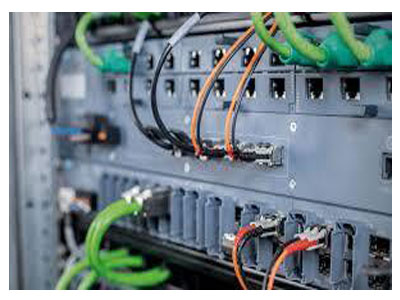Key Takeaway
Industrial Ethernet is a general term for Ethernet technology used in industrial environments. It connects devices like sensors, controllers, and machines for reliable communication. It is built to handle tough conditions like extreme temperatures and vibrations, ensuring seamless data exchange in automation systems.
PROFINET, on the other hand, is a specific protocol that runs on Industrial Ethernet. It is designed for real-time communication in industrial networks. PROFINET offers advanced features like motion control, device synchronization, and system diagnostics. The main difference is that Industrial Ethernet refers to the hardware and network, while PROFINET is a software protocol that uses Industrial Ethernet to enable automation tasks.
Defining PROFINET: A Subset of Industrial Ethernet
PROFINET stands for Process Field Network and is a communication protocol built on Industrial Ethernet technology. It is specifically designed for real-time control and automation in industries. While Industrial Ethernet refers to the broader technology enabling networking in industrial environments, PROFINET focuses on the communication layer that ensures precision and synchronization in automation systems.
What makes PROFINET unique is its ability to handle time-sensitive tasks. It supports real-time (RT) and isochronous real-time (IRT) communication, which are crucial for applications like robotic control or motion synchronization. These capabilities are built on the rugged and high-speed foundation provided by Industrial Ethernet.
Think of it this way: Industrial Ethernet is the robust highway, while PROFINET is the specialized set of rules and systems that make traffic move smoothly and efficiently in industrial settings. It’s tailored for automation, making it a critical component of Industry 4.0 and smart factories.

A Subset of Industrial Ethernet H2: Key Protocol Differences Between PROFINET and Industrial Ethernet
The key difference between PROFINET and Industrial Ethernet lies in how they function. Industrial Ethernet is a broad term for Ethernet technology adapted for industrial environments. It focuses on reliable data transmission over rugged networks. In contrast, PROFINET is a protocol that operates on Industrial Ethernet, adding layers of functionality specific to automation.
One major difference is protocol compatibility. PROFINET supports deterministic communication, ensuring that critical signals are delivered at precise intervals. Industrial Ethernet, while fast and reliable, does not inherently provide this level of precision without additional protocols like PROFINET.
Another distinction is in device integration. PROFINET includes features like diagnostics and plug-and-play capabilities for industrial devices, making it easier to deploy and maintain. Industrial Ethernet alone lacks these protocol-specific benefits, making it less suitable for advanced automation tasks.
In essence, Industrial Ethernet is the backbone, and PROFINET is the specialized tool built to maximize its potential in automation environments.
Key Protocol Differences Between PROFINET and Industrial Ethernet H2: Communication Speeds and Data Transmission in PROFINET vs. Industrial Ethernet
Key Protocol Differences Between PROFINET and Industrial Ethernet
H2: Communication Speeds and Data Transmission in PROFINET vs. Industrial Ethernet
Communication Speeds and Data Transmission in PROFINET vs. Industrial Ethernet H2: ApplicationsWhere PROFINET Outperforms Industrial Ethernet
PROFINET shines in applications requiring real-time performance and synchronization. In industries like manufacturing, automotive, and pharmaceuticals, precise control of machines is crucial. For example, a robotic arm assembling car parts must move in perfect coordination with other machines, and PROFINET ensures this by providing deterministic communication.
Another area where PROFINET outperforms is in motion control systems. Isochronous real-time (IRT) communication ensures that devices operate in perfect harmony, critical for applications like conveyor belts or CNC machines.
While Industrial Ethernet is effective for general data communication, PROFINET offers advanced diagnostics and error detection, ensuring quick troubleshooting and minimal downtime. These capabilities make it the preferred choice for critical automation tasks.
ApplicationsWhere PROFINET Outperforms Industrial Ethernet H2:Which One to Choose: PROFINET or General Industrial Ethernet?
Choosing between PROFINET and Industrial Ethernet depends on the specific requirements of your network. If your focus is on creating a robust and scalable network for general communication, Industrial Ethernet is sufficient. It provides high-speed data transfer and supports various industrial protocols.
However, if your application involves precise control, real-time communication, or synchronization, PROFINET is the better choice. It is specifically designed for automation, ensuring that critical data is transmitted reliably and on time.
Cost and complexity also play a role in the decision. While Industrial Ethernet is often more straightforward and cost-effective for basic networks, PROFINET adds advanced features that justify its higher investment for critical applications. The key is to evaluate your needs carefully and choose the technology that aligns with your operational goals.
Conclusion
Both PROFINET and Industrial Ethernet are powerful technologies that serve essential roles in industrial automation. Industrial Ethernet provides the foundation for reliable communication, while PROFINET builds on it to deliver advanced capabilities like real-time control and synchronization.
By understanding their differences and evaluating your specific requirements, you can choose the right solution for your industrial network. Whether you need scalability, precision, or advanced diagnostics, the right technology will ensure your operations are efficient, reliable, and future-ready.
